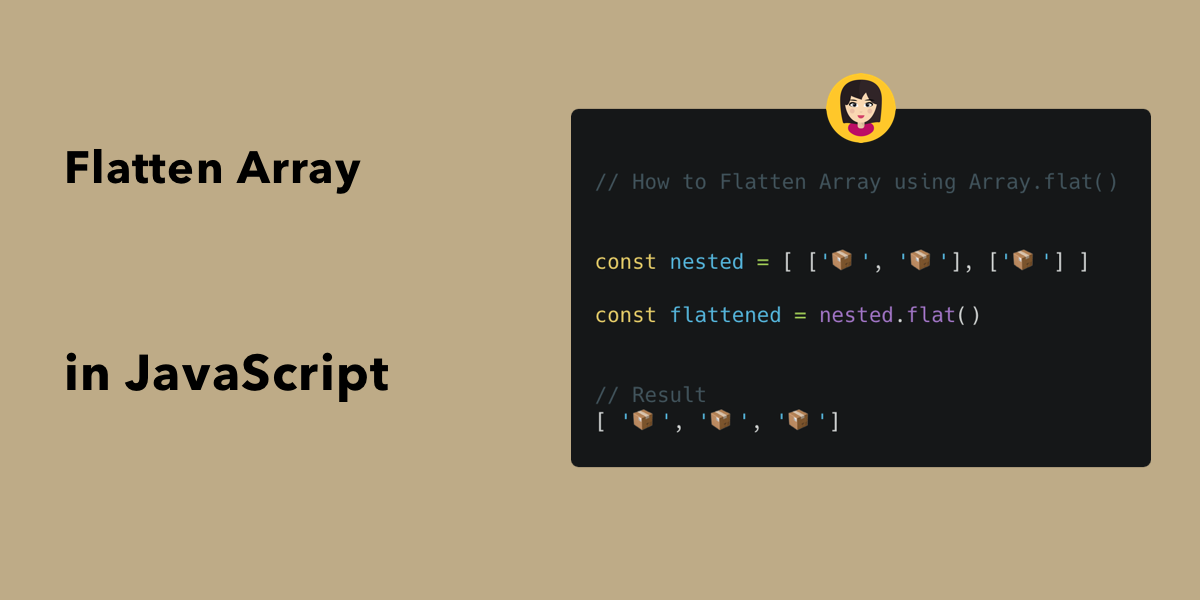python setup.py 淺析
熟悉也陌生的腳本:setup.py
在 setup.py 裡,定義了以下的內容:
- Who : 是誰開發了這個套件
- What : 套件的功用是什麼
- How : 需要哪些相依的套件才能工作
在 setup.py 裡,大多定義了以下內容: Who : 到底是誰寫了這套件 (a.k.a 有 bug 誰要修) What : 這套件在做啥 HOW : 這套件需要其他哪些套件才能運作 其中我覺得第三點是 setup.py 最重要的工作。 從範例裡可以看到 install_requires 這個關鍵字,用來定義所需要的額外套件。之前看過不少 Open Source 套件會這樣寫 setup.py : with open(‘requirements.txt’) as fid: requires = [line.strip() for line in fid] … setup( …, install_requires=requires, … ) 之前我也是有樣學樣,自以為這樣我就只要用 pip 管理,就可以自動同步 setup.py 的相依問題。但這是不對的。 這裡我擷取官方文件裡的內容: install_requires is a setuptools setup.py keyword that should be used to specify what a project minimally needs to run correctly. When the project is installed by pip, this is the specification that is used to install its dependencies. 簡單的來說,setup.py 的 install_requires 是用來表達你的套件被使用時所需要的套件,而 requirements.txt 是用來表達你具體的環境是如何。 說來有點而繞口,但這差別是什麼? 這裡我偷用了這篇 blog 的內容來說明。 譬如說你在install_requires 裡寫說需要 numpy ,就像是 Python 的 duck typing 一樣,意思是你的套件需要一個看起來像 numpy 的套件就好了,你並不在意實際上這 numpy 是誰,只要它看起來像個 numpy 就好。 但在 requirements.txt 裡 (或者 pip freeze) 的意義就不同了,這代表了你需要特定某個 numpy 才能重現你的環境。 我想之所以會混淆這兩個的差別,是因為 pip跟 requirements.txt的時候,你也可以把 requirements.txt 裡所有的版本號去除, pip 一樣可以運作,就好像你不在意版本一樣。我覺得這應該是 pip 設計不好的地方,如果 pip 限制你在 -r 的時候強制鎖版號,應該就不會有這樣的混淆了。
setuptools.setup() 參數說明
packages
对于所有 packages 列表里提到的纯 Python 模块做处理 需要在 setup 脚本里有一个包名到目录的映射。 默认对于 setup 脚本所在目录下同名的目录即视为包所在目录。 当你在 setup 脚本中写入 packages = [‘foo’] 时, setup 脚本的同级目录下可以找到 foo/init.py。如果没有找到对应文件,disutils 不会直接报错,而是给出一个告警然后继续进行有问题的打包流程。
package_dir
阐明包名到目录的映射,见 packages
package_dir = {‘’: ‘lib’} 键: 代表了包的名字,空的包名则代表 root package(不在任何包中的顶层包)。 值: 代表了对于 setup 脚本所在目录的相对路径.
packages = [‘foo’] package_dir = {‘’: ‘lib’} 指明包位于 lib/foo/, lib/foo/init.py 这个文件存在
另一种方法则是直接将 foo 这个包的内容全部放入 lib 而不是在 lib 下建一个 foo 目录
package_dir = {‘foo’: ‘lib’} 一个在 package_dir 字典中的 package: dir 映射会对当前包下的所有包都生效, 所以 foo.bar 会自动生效. 在这个例子当中, packages = [‘foo’, ‘foo.bar’] 告诉 distutils 去寻找 lib/init.py 和 lib/bar/init.py.
py_modules
对于一个相对较小的模块的发布,你可能更想要列出所有模块而不是列出所有的包,尤其是对于那种根目录下就是一个简单模块的类型. 这描述了两个包,一个在根目录下,另一个则在 pkg 目录下。 默认的“包:目录”映射关系表明你可以在 setup 脚本所在的路径下找到 mod1.py 和 pkg/mod2.py。 当然,你也可以用 package_dir 选项重写这层映射关系就是了。
find_packages
packages=find_packages(exclude=(‘tests’, ‘robot_server.scripts’)), exclude 里面是包名,而非路径
include_package_data
引入包内的非 Python 文件 include_package_data 需要配合 MANIFEST.in 一起使用
MANIFEST.in:
include myapp/scripts/start.py recursive-include myapp/static * setup( name=’MyApp’, # 应用名 version=’1.0’, # 版本号 packages=[‘myapp’], # 包括在安装包内的Python包 include_package_data=True # 启用清单文件MANIFEST.in ) 注意,此处引入或者排除的文件必须是 package 内的文件
setup-demo/ ├ mydata.data # 数据文件 ├ setup.py # 安装文件 ├ MANIFEST.in # 清单文件 └ myapp/ # 源代码 ├ static/ # 静态文件目录 ├ init.py … 在 MANIFEST.in 引入 include mydata.data 将不起作用
exclude_package_date 排除一部分包文件 {‘myapp’:[‘.gitignore]},就表明只排除 myapp 包下的所有.gitignore 文件。
data_files 指定其他的一些文件(如配置文件)
data_files=[(‘bitmaps’, [‘bm/b1.gif’, ‘bm/b2.gif’]), (‘config’, [‘cfg/data.cfg’]), (‘/etc/init.d’, [‘init-script’])] 规定了哪些文件被安装到哪些目录中。 如果目录名是相对路径(比如 bitmaps),则是相对于 sys.prefix(/usr) 或 sys.exec_prefix 的路径。 否则安装到绝对路径(比如 /etc/init.d )。
cmdclass 定制化命令,通过继承 setuptools.command 下的命令类来进行定制化
class UploadCommand(Command): “"”Support setup.py upload.””” …
def run(self):
try:
self.status('Removing previous builds…')
rmtree(os.path.join(here, 'dist'))
except OSError:
pass
self.status('Building Source and Wheel (universal) distribution…')
os.system('{0} setup.py sdist bdist_wheel --universal'.format(sys.executable))
self.status('Uploading the package to PyPI via Twine…')
os.system('twine upload dist/*')
self.status('Pushing git tags…')
os.system('git tag v{0}'.format(about['__version__']))
os.system('git push --tags')
sys.exit()
setup( … # $ setup.py publish support. cmdclass={ ‘upload’: UploadCommand, }, ) 这样可以通过 python setup.py upload 运行打包上传代码
install_requires
安装这个包所需要的依赖,列表
tests_require
与 install_requires 作用相似,单元测试时所需要的依赖
虚拟运行环境下安装包 以 legit 为例
下载 lgit 源码 git clone https://github.com/kennethreitz/legit.git 创建虚拟运行环境 virtualenv –no-site-packages venv 运行环境目录结构为:
venv/ ├── bin ├── include ├── lib ├── local └── pip-selfcheck.json 打包工程 python3 setup.py sdist bdist_wheel
. ├── AUTHORS ├── build │ ├── bdist.linux-x86_64 │ └── lib.linux-x86_64-2.7 ├── dist │ ├── legit-1.0.1-py2.py3-none-any.whl │ └── legit-1.0.1.tar.gz 在 dist 下生成了安装包
进入虚拟环境 source venv/bin/activate 安装包 pip install ./dist/legit-1.0.1.tar.gz
Successfully built legit args clint Installing collected packages: appdirs, args, click, lint, colorama, crayons, smmap2, gitdb2, GitPython, ix, pyparsing, packaging, legit Successfully installed GitPython-2.1.8 appdirs-1.4.3 rgs-0.1.0 click-6.7 clint-0.5.1 colorama-0.4.0 rayons-0.1.2 gitdb2-2.0.3 legit-1.0.1 packaging-17.1 yparsing-2.2.0 six-1.11.0 smmap2-2.0.3 安装过程分析 venv/lib/python2.7/site-packages/ 下安装了 legit 及依赖包
legit/venv/lib/python2.7/site-packages$ tree -L 1
. ├── appdirs-1.4.3.dist-info ├── appdirs.py ├── appdirs.pyc ├── args-0.1.0.dist-info ├── args.py ├── args.pyc ├── click ├── click-6.7.dist-info ├── clint ├── clint-0.5.1.dist-info ├── colorama ├── colorama-0.4.0.dist-info ├── crayons-0.1.2.dist-info ├── crayons.py ├── crayons.pyc ├── easy_install.py ├── easy_install.pyc ├── git ├── gitdb ├── gitdb2-2.0.3.dist-info ├── GitPython-2.1.8.dist-info ├── legit ├── legit-1.0.1.dist-info ├── packaging ├── packaging-17.1.dist-info ├── pip ├── pip-18.1.dist-info ├── pkg_resources ├── pyparsing-2.2.0.dist-info ├── pyparsing.py ├── pyparsing.pyc ├── setuptools ├── setuptools-40.6.2.dist-info ├── six-1.11.0.dist-info ├── six.py ├── six.pyc ├── smmap ├── smmap2-2.0.3.dist-info ├── wheel └── wheel-0.32.2.dist-info venv/bin 下新增可执行文件 legit, 内容为
#!/home/turtlebot/learn/python/legit/venv/bin/python
-- coding: utf-8 --
import re import sys
from legit.cli import cli
if name == ‘main’: sys.argv[0] = re.sub(r’(-script.pyw?|.exe)?$’, ‘’, sys.argv[0]) sys.exit(cli()) 此时,可以直接运行
legit setup.py 分析 #!/usr/bin/env python
-- coding: utf-8 --
import os import sys from codecs import open # To use a consistent encoding
from setuptools import setup # Always prefer setuptools over distutils
APP_NAME = ‘legit’ APP_SCRIPT = ‘./legit_r’ VERSION = ‘1.0.1’
Grab requirements.
with open(‘reqs.txt’) as f: required = f.readlines()
settings = dict()
Publish Helper.
if sys.argv[-1] == ‘publish’: os.system(‘python setup.py sdist bdist_wheel upload’) sys.exit()
if sys.argv[-1] == ‘build_manpage’: os.system(‘rst2man.py README.rst > extra/man/legit.1’) sys.exit()
Build Helper.
if sys.argv[-1] == ‘build’: import py2exe # noqa sys.argv.append(‘py2exe’)
settings.update(
console=[{'script': APP_SCRIPT}],
zipfile=None,
options={
'py2exe': {
'compressed': 1,
'optimize': 0,
'bundle_files': 1}})
settings.update( name=APP_NAME, version=VERSION, description=’Git for Humans.’, long_description=open(‘README.rst’).read(), author=’Kenneth Reitz’, author_email=’me@kennethreitz.com’, url=’https://github.com/kennethreitz/legit’, packages=[‘legit’], install_requires=required, license=’BSD’, classifiers=[ ‘Development Status :: 5 - Production/Stable’, ‘Intended Audience :: Developers’, ‘Natural Language :: English’, ‘License :: OSI Approved :: BSD License’, ‘Programming Language :: Python’, ‘Programming Language :: Python :: 2’, ‘Programming Language :: Python :: 2.7’, ‘Programming Language :: Python :: 3’, ‘Programming Language :: Python :: 3.4’, ‘Programming Language :: Python :: 3.5’, ‘Programming Language :: Python :: 3.6’, ], entry_points={ ‘console_scripts’: [ ‘legit = legit.cli:cli’, ], } )
setup(**settings) packages=[‘legit’] 引入 legit 目录下的所有默认引入文件 install_requires=required 指明安装时需要额外安装的第三方库 ‘console_scripts’: [‘legit = legit.cli:cli’,] 生成可执行控制台程序,程序名为 legit, 运行 legit.cli 中的 cli()函数。最终会在 bin/ 下生成 legit 可执行 py 文件,调用制定的函数 setup.py 实例分析 一個setup.py的範例 https://github.com/navdeep-G/setup.py
#!/usr/bin/env python
# -*- coding: utf-8 -*-
# Note: To use the 'upload' functionality of this file, you must:
# $ pip install twine
import io
import os
import sys
from shutil import rmtree
from setuptools import find_packages, setup, Command
# Package meta-data.
NAME = 'mypackage'
DESCRIPTION = 'My short description for my project.'
URL = 'https://github.com/me/myproject'
EMAIL = 'me@example.com'
AUTHOR = 'Awesome Soul'
REQUIRES_PYTHON = '>=3.6.0'
VERSION = None
# What packages are required for this module to be executed?
REQUIRED = [
# 'requests', 'maya', 'records',
]
# What packages are optional?
EXTRAS = {
# 'fancy feature': ['django'],
}
# The rest you shouldn't have to touch too much :)
# ------------------------------------------------
# Except, perhaps the License and Trove Classifiers!
# If you do change the License, remember to change the Trove Classifier for that!
here = os.path.abspath(os.path.dirname(__file__))
# Import the README and use it as the long-description.
# Note: this will only work if 'README.md' is present in your MANIFEST.in file!
try:
with io.open(os.path.join(here, 'README.md'), encoding='utf-8') as f:
long_description = '\n' + f.read()
except FileNotFoundError:
long_description = DESCRIPTION
# Load the package's __version__.py module as a dictionary.
about = {}
if not VERSION:
with open(os.path.join(here, NAME, '__version__.py')) as f:
exec(f.read(), about)
else:
about['__version__'] = VERSION
class UploadCommand(Command):
"""Support setup.py upload."""
description = 'Build and publish the package.'
user_options = []
@staticmethod
def status(s):
"""Prints things in bold."""
print('\033[1m{0}\033[0m'.format(s))
def initialize_options(self):
pass
def finalize_options(self):
pass
def run(self):
try:
self.status('Removing previous builds…')
rmtree(os.path.join(here, 'dist'))
except OSError:
pass
self.status('Building Source and Wheel (universal) distribution…')
os.system('{0} setup.py sdist bdist_wheel --universal'.format(sys.executable))
self.status('Uploading the package to PyPI via Twine…')
os.system('twine upload dist/*')
self.status('Pushing git tags…')
os.system('git tag v{0}'.format(about['__version__']))
os.system('git push --tags')
sys.exit()
# Where the magic happens:
setup(
name=NAME,
version=about['__version__'],
description=DESCRIPTION,
long_description=long_description,
long_description_content_type='text/markdown',
author=AUTHOR,
author_email=EMAIL,
python_requires=REQUIRES_PYTHON,
url=URL,
packages=find_packages(exclude=('tests',)),
# If your package is a single module, use this instead of 'packages':
# py_modules=['mypackage'],
# entry_points={
# 'console_scripts': ['mycli=mymodule:cli'],
# },
install_requires=REQUIRED,
extras_require=EXTRAS,
include_package_data=True,
license='MIT',
classifiers=[
# Trove classifiers
# Full list: https://pypi.python.org/pypi?%3Aaction=list_classifiers
'License :: OSI Approved :: MIT License',
'Programming Language :: Python',
'Programming Language :: Python :: 3',
'Programming Language :: Python :: 3.6',
'Programming Language :: Python :: Implementation :: CPython',
'Programming Language :: Python :: Implementation :: PyPy'
],
# $ setup.py publish support.
cmdclass={
'upload': UploadCommand,
},
)

 How to solve .bash_profile not working in zsh
How to solve .bash_profile not working in zsh